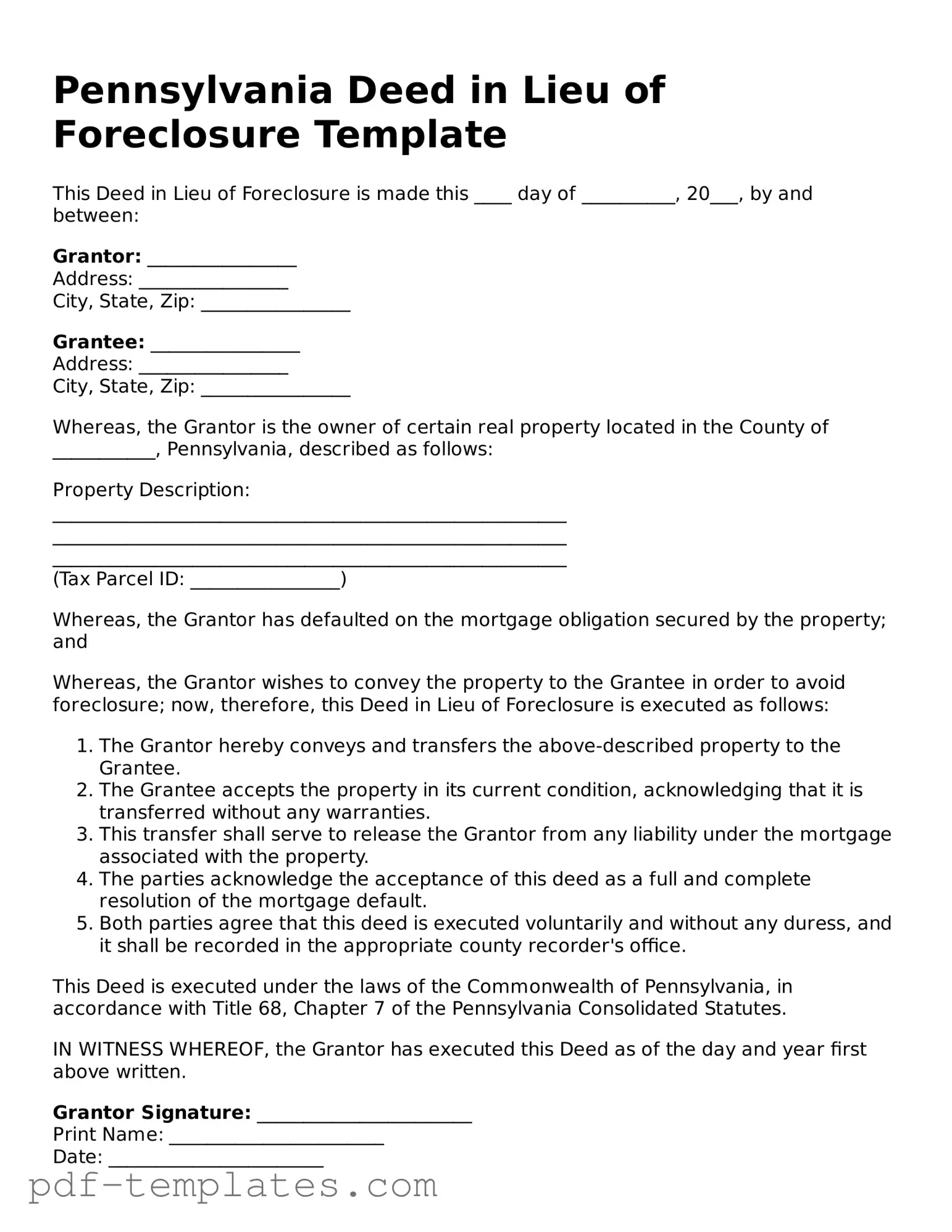The Pennsylvania Deed in Lieu of Foreclosure is a valuable tool for homeowners facing foreclosure. It allows a homeowner to voluntarily transfer the title of their property to the lender in exchange for the cancellation of the mortgage debt. This process can be less stressful than a traditional foreclosure, providing a smoother transition for those in financial distress. However, several other documents serve similar purposes in the realm of real estate and debt resolution.
The Trader Joe's application form is a vital document for job seekers wishing to join this beloved grocery chain. It outlines necessary information about potential employees and provides an opportunity to showcase their unique skills and experience. Completing the form accurately can significantly increase the chances of landing a position at one of their stores. For more details, you can access the application form here: https://documentonline.org/blank-trader-joe-s-application.
One such document is the Short Sale Agreement. In a short sale, a homeowner sells their property for less than the amount owed on the mortgage, with the lender's approval. This agreement allows the homeowner to avoid foreclosure while still relieving them of their mortgage debt. Both the Deed in Lieu of Foreclosure and a Short Sale Agreement aim to provide a solution for distressed homeowners, but they differ in the method of debt resolution and the involvement of a buyer.
Another similar document is the Mortgage Modification Agreement. This agreement allows homeowners to renegotiate the terms of their existing mortgage, often resulting in lower monthly payments or a reduced interest rate. While the Deed in Lieu of Foreclosure involves surrendering the property, a Mortgage Modification Agreement keeps the homeowner in their home, providing a different pathway to financial stability.
The Loan Assumption Agreement is also comparable. In this scenario, a buyer takes over the seller's existing mortgage, assuming responsibility for the remaining debt. This can be beneficial for both parties, as it can help the seller avoid foreclosure while allowing the buyer to take advantage of potentially favorable loan terms. Like the Deed in Lieu, it facilitates a transfer of responsibility, but it involves a new party stepping in rather than a direct surrender to the lender.
The Forbearance Agreement is another important document. In this arrangement, a lender allows a borrower to temporarily pause or reduce their mortgage payments due to financial hardship. This can provide much-needed relief and time for the homeowner to recover financially. While the Deed in Lieu of Foreclosure results in the transfer of property, a Forbearance Agreement focuses on retaining ownership while addressing immediate financial concerns.
A Promissory Note is also relevant in this context. This document outlines the borrower's promise to repay a specified amount of money, often in connection with a mortgage. While it serves a different function, both the Promissory Note and the Deed in Lieu of Foreclosure deal with the obligations of the borrower and the lender. The Deed in Lieu represents a resolution of that obligation through property transfer.
The Release of Mortgage document is similar in that it signifies the end of a mortgage obligation. When a mortgage is paid off or settled, the lender issues a release, freeing the homeowner from further claims on the property. While the Deed in Lieu of Foreclosure results in the homeowner relinquishing the property, both documents ultimately aim to resolve the mortgage debt and clarify ownership status.
The Bankruptcy Filing can also be compared to the Deed in Lieu of Foreclosure. When a homeowner files for bankruptcy, they seek relief from debts, including mortgage obligations. This legal process can lead to foreclosure, but it may also allow for the retention of the home under certain circumstances. Both processes provide pathways for individuals facing financial difficulties, though they operate within different legal frameworks.
Lastly, the Property Settlement Agreement is relevant, especially in divorce situations. This document outlines the division of property and debts between parties. Similar to a Deed in Lieu of Foreclosure, it can facilitate a change in ownership and financial responsibilities. However, the Property Settlement Agreement typically occurs in the context of marital dissolution, while the Deed in Lieu focuses on resolving mortgage debt.
